Photography is about a lot of little things coming together to make a great image.
There is very rarely, in my opinion, one stand-alone aspect of food photography that makes an image great. It’s all those little things playing a vital role in capturing a beautiful story.
You not only need a half decent camera, but you also need a lens that can produce a certain result, capture your story and the angle you want.
Your light is a heavily contributing factor in the image quality, and we haven’t even got to the part where we talk about the food!
Good looking fresh food, interestingly styled, cohesive props that tie back to your story, correct camera settings and thorough post-production…you get the idea.
NOTE: This is NOT a gear or review post. This post is designed to be evergreen and empower you to decide what the best camera for food photography is for you with current models on the market.
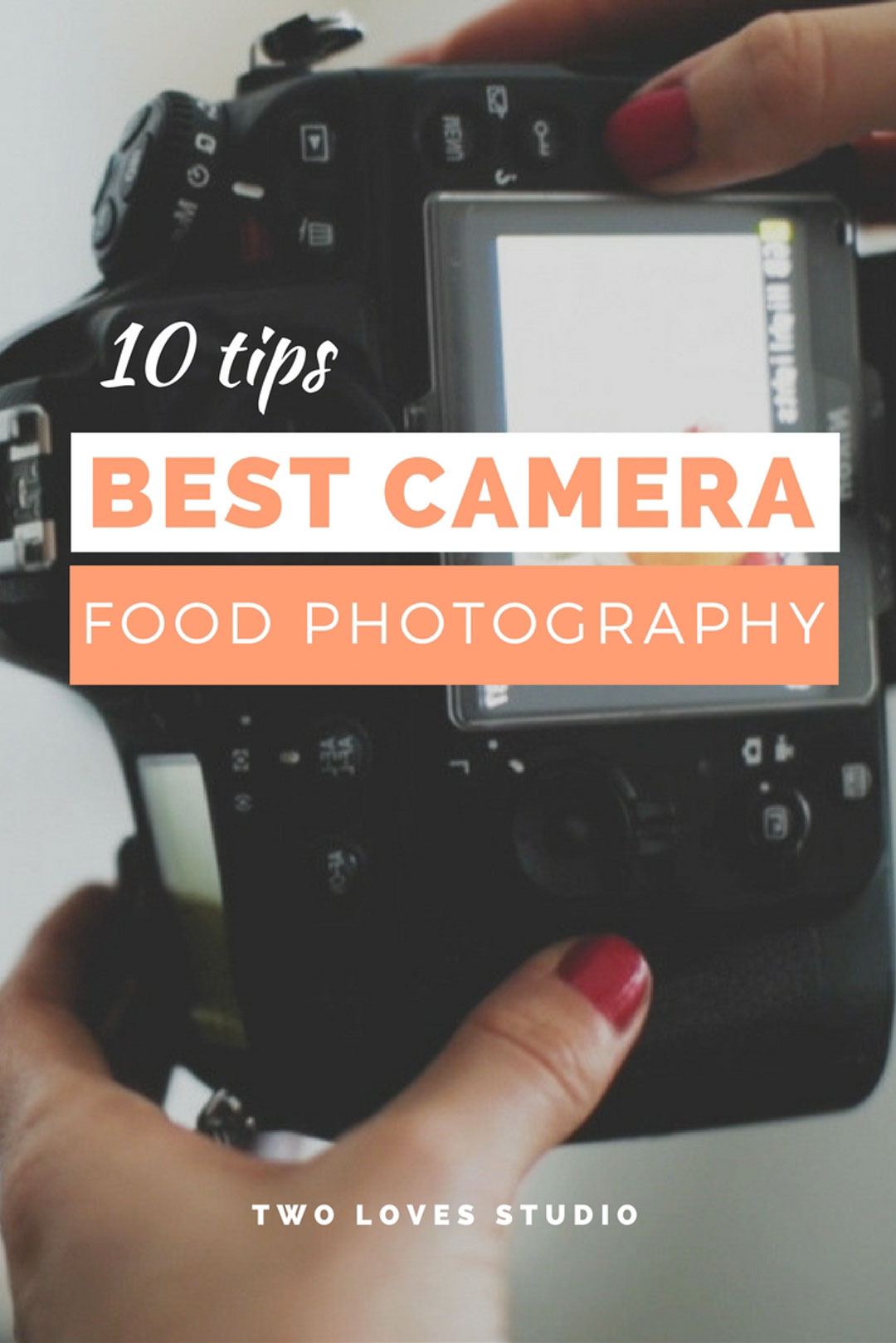
Tips For Finding The Best Camera For Food Photography
So does a ‘better’ or the ‘best’ camera really take better photos of food? The answer is yes and no. Now before you roll your eyes and leave, I said this for a reason.
This is not a gear post on the best camera for food photography. I am a firm believer that the best camera is one you have access too, IN ADDITION to knowing how to use it.
This post if for those who want to be empowered to know which is the best camera for food photography for them.
With me? Great!
Then let’s jump into some important considerations when deciding on the best camera for food photography.
Go Beyond The Kit Lens
It’s not just a good camera that will help you to create beautiful images of food. The lens you use will have a bigger impact on the quality of the image. Which will control your ability to use stylistic choices like a blurry background.
RELATED: How To Blur Background In Food Photography
This is why you’ll hear photographers say all the time ‘invest in glass’. It’s smart to put your money into the best lens you can afford and invest in your collection of lenses.
Majority of the time, you’ll take your lenses with your along your photography journey. Yet, you will change your camera more often as new updates and features become available. Good lenses can last you a lifetime, providing you don’t drop your lens.
Which I’ve done on shoot before…ouch.
Most DSLRs that you will be looking at will have the ability to interchange lenses. A camera that has a fixed lens, no matter whether it is a zoom or not, won’t grow with you.
The best camera for food photography will have the ability to interchange lenses.
Interested in what lenses I recommend for food photography? Then check out these two posts.
RELATED: 4 Ultimate Lenses For Beautiful Food Photography
Access To Manual Settings
Technology has improved leaps and bounds in terms of what our devices can automate for us. Don’t forget, however, that nothing can replace your brain and how you think creatively.
When it comes to choosing the best camera for food photography, you’ll want the ability to be able to shoot on manual settings. Notice here I said ‘ability’.
Most of us will want to start on something like Aperture Priority or Shutter Priority so we can start creating photography. Then work on our food styling and composition.
But there will be a point at which you’ll want to create more, go beyond allowing the camera to think for you. This is where shooting on manual comes in.
The best camera for food photography will have the ability to shoot on manual.
There are some great point and shoots out there, that do amazing things. To fully immerse yourself in food photography or get paid to take food photography, then you’re probably beginning to see that a ‘happy snap’ camera, won’t cut it.
Ability to Tether
Now tethering might sound like something that you’re not able to do as you don’t have all the gear. Mind you, all you need is a tether cord and Lightroom and you’re set.
However being able to tether will open up a world of possibility and growth for your composition and styling.
You get to see in real time how small changes and tweaks can turn a good photo into a great one.
Most post-production editing software will allow you to tether. So if you shoot RAW then all you need is a tether cable and off you go. BTW, I highly recommend giving tethering a go.
The best camera for food photography will allow you to tether.
If you’re a photographer who is looking to enter the freelance market and get paid for your food photography, then it’s almost expected on some shoots that you will be able to tether.
Especially for editorial and advertising food shoots where the client or art director is on set.
Isn’t Insanely Heavy
Just to check in as we’re halfway through the post now, we are trying to find the best camera for food photography. NOT sports photography, or wildlife photography.
Let me ask you, have you ever tried to shoot a flat lay with 7kgs in your hands?
It’s hard.
Remembering that the weight of your camera will incorporate the weight of the body and the lens. Some lenses are quite heavy and can double the weight of your camera for food photography in no time.
Food photography is still life photography, we are responsible for creating something from nothing.
Not only do we have to manipulate light, but we have to be totally in control of every aspect of cooking, styling and composing.
The best camera for food photography is one that is reasonably light weight.
A photography friend of mine has a heavy duty sports camera that costs well into 5 figures. For food photography, it’s flippin’ heavy.
Cropped sensors allow cameras to be made smaller and more lightweight. Whilst there is a slight decrease in image quality (and that gap is reducing as technology gets better) it’s a real consideration.
A tripod is almost mandatory for food shoots, as you have to style as well. Be sure that your tripod can hold your camera. Remember we aren’t shooting fast moving action subjects!
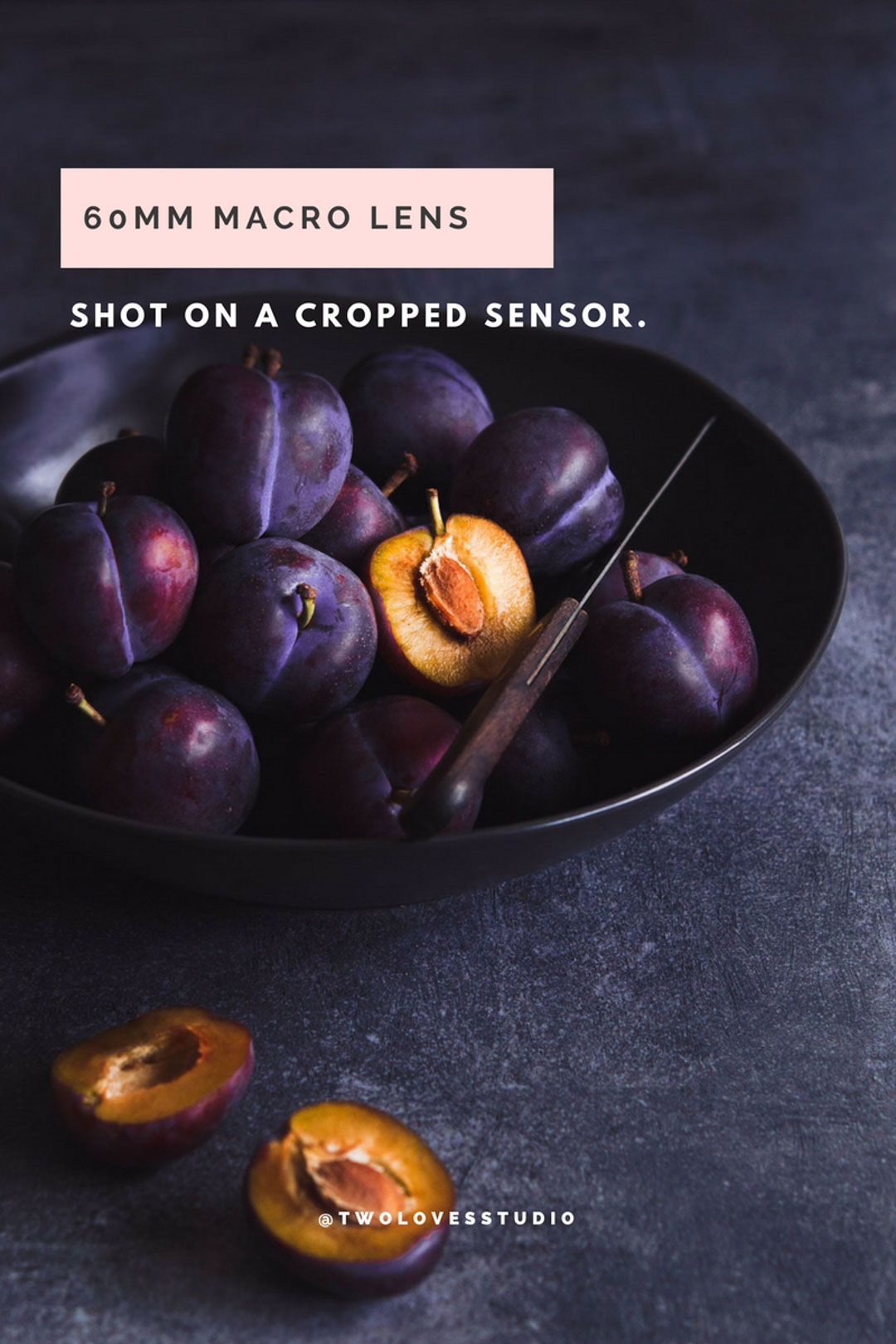
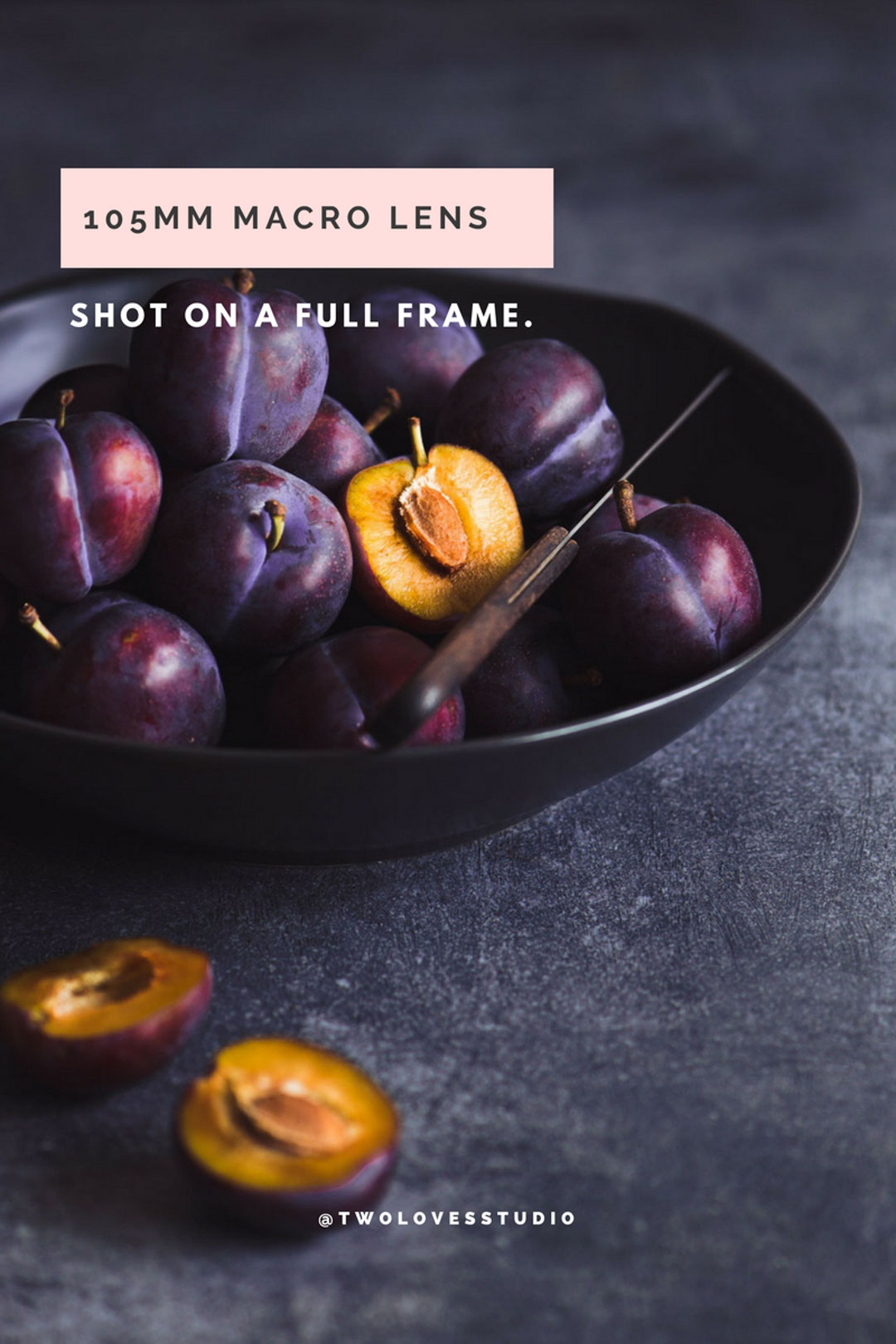
Full Frame
Now I am one of those people who believes that it’s not the camera that takes the image, you do. Owning the best equipment that money can buy doesn’t mean that the pictures you create will be better, award-winning or moving.
But rather it’s how you use your equipment and your creativity that does.
I would be lying if I said that a full frame camera wasn’t better than a cropped sensor. They are simply build to be better and generally have more features.
That’s why they are more expensive.
However, newer cropped sensors are pretty darn good.
Invest in a full frame if you have the ability to.
That’s my general advice.
It is important that you also invest in good quality lenses.
So if you do have limited funds, then going with a cropped sensor and getting a good lens can actually make more difference to your work than vice versa.
You can see in this post that I took the same shot with a full frame and cropped sensor. Can you tell the difference between the two?
What do you think?
A Camera You Know How To Use
Continuing on from the conversation above, expensive equipment even if it is the best that money can buy is no use to you if you can’t use it.
The best camera for food photography is one that you know how to use and can fully control.
I have lost track of how many times I have I’ve heard creatives tell me that they were given an expensive camera as a gift. They were too overwhelmed to work out how to use it! We all know what happens then right?….No images are created!
It might sound like a super obvious thing to say but it is so true. Knowing the technical aspects of photography is what is going to make the difference to your work.
A good place to start might be to really dive into the camera that you have to work out its limitations and must have features.
When you buy a new camera, there will be a heap of features that might not make sense to you as if you need them or not.
Being able to fully use your camera as it is now, knowing the settings and functionalities that make a difference. And will assist you in purchasing a new camera. Being informed about if those specs will make a difference for the price-tag.
One You Can Afford
The equipment you need for food photography can easily rack up that credit card bill! Besides the photography gear, having backgrounds, props and good looking food are all part of a shoot.
If you are on a limited budget, then having the best camera, but no money for good quality lenses or props won’t make your images look the best they can.
Cameras will always be upgraded, but props and lenses will usually stay with us for the long haul. These things are just as important in making an image as your camera.
The best camera for food photography is one that you can afford.
Get a second-hand camera, invest in good quality lenses then upgrade your camera when you start to earn some money from your work.
I didn’t own my own camera for many years when I started photography. I had a cropped sensor, Nikon D300 that I borrowed for years before I bought it – preloved.
More Than One Storage Slot
When you do more shoots and aren’t tethering, it is a real benefit to be able to have more than one slot for the memory cards, either SD of CF card.
It is better to have a large volume of storage spread over multiple cards then just one in case they fail, you won’t loose all your images.
With multiple larger storage cards, you can effectively double the amount of image that you can take before you have to back up your cards and reload.
As technology gets better, newer cameras come standard with more than one option. So this might just be a consideration for when you’re buying a new camera.
Trusted Brand That Will Stay In Business
It can be overwhelming to try and think about which brands of camera you should start to invest and stay with. If you get into photography seriously it’s not uncommon to spend a small fortune on photography gear.
Switching between brands is a very costly exercise that you’d be wise to avoid at all costs.
Choosing a well known brand that isn’t going to go out of business has major benefits. Not only are they committed to improving their products, but it generally means you won’t be forced to switch if a camera business goes out of business.
This hasn’t happened often, in my lifetime anyway, but with the way things are moving so fast these days, companies have to be on top of innovation more than ever.
It’s happened before! The best camera for food photography is with a brand that isn’t foreseen to go out of business in the next couple of decades.
The Camera That Feels Like An Extension Of You
Still can’t decide? I don’t blame you. The big name brands in the photography space all have great cameras that will allow you to really create beautiful food photography.
So where does that leave you? The best camera for food photography is one that feels like an extension of your creativity. That you can use on auto-pilot.
Well, I based my decision between Canon and Nikon on the way their cameras felt in my hands.
That’s right. I went to the camera store and tried about current models, brands and decided that Nikon just felt better in my hands to shoot with.
Now, I know that brands will often change the placement of controls and buttons as models improve, but I had to start somewhere.
Tell me, were these tips helpful in helping you find that dream camera of yours for food photography? Let me know what you’re thinking of investing in!

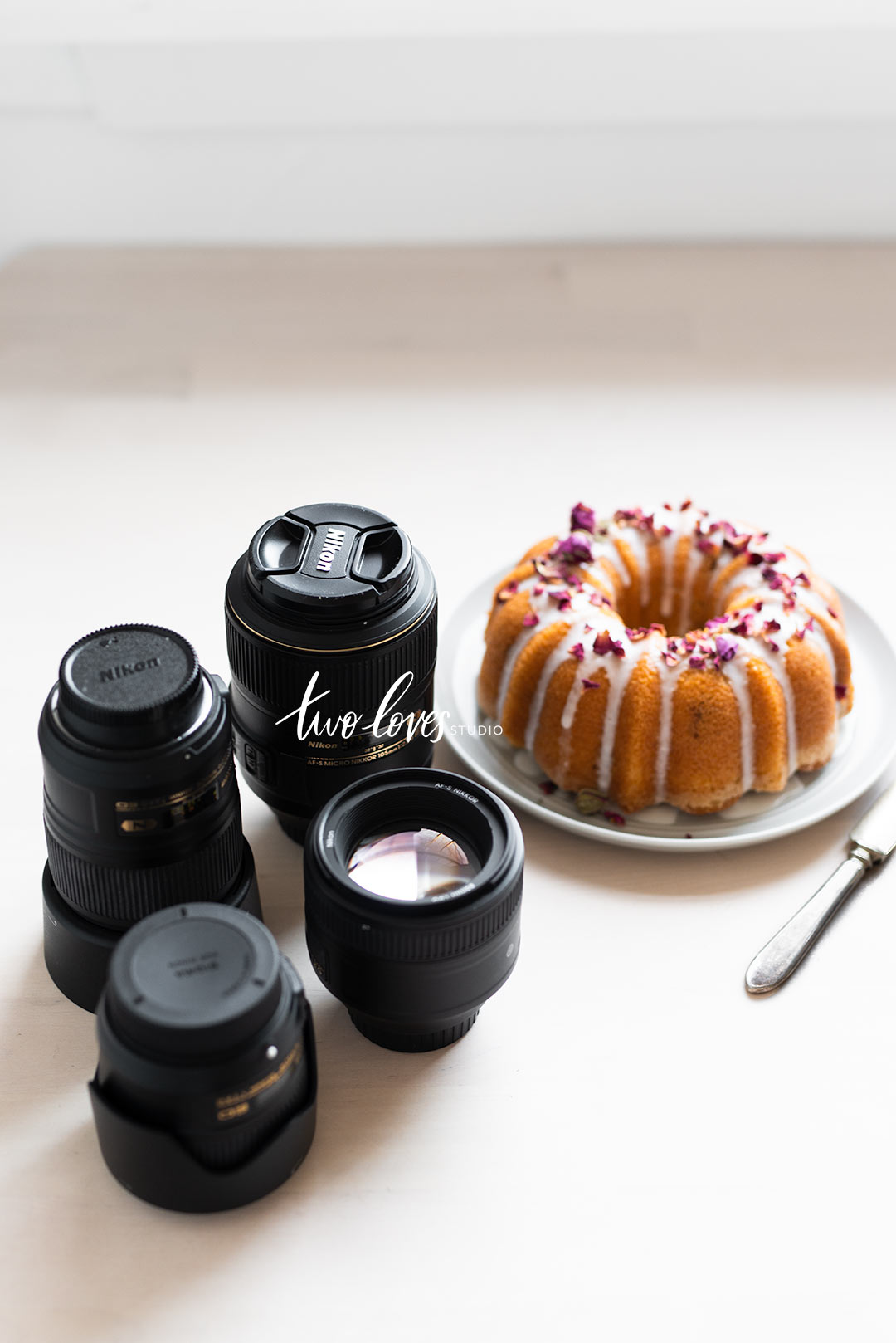
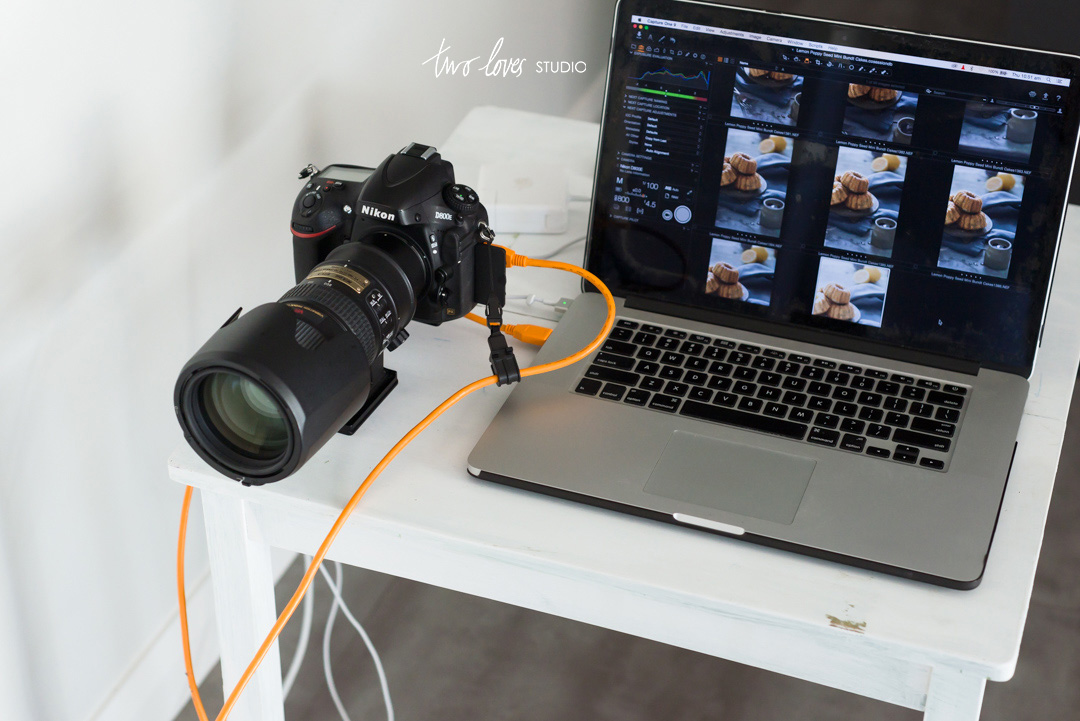
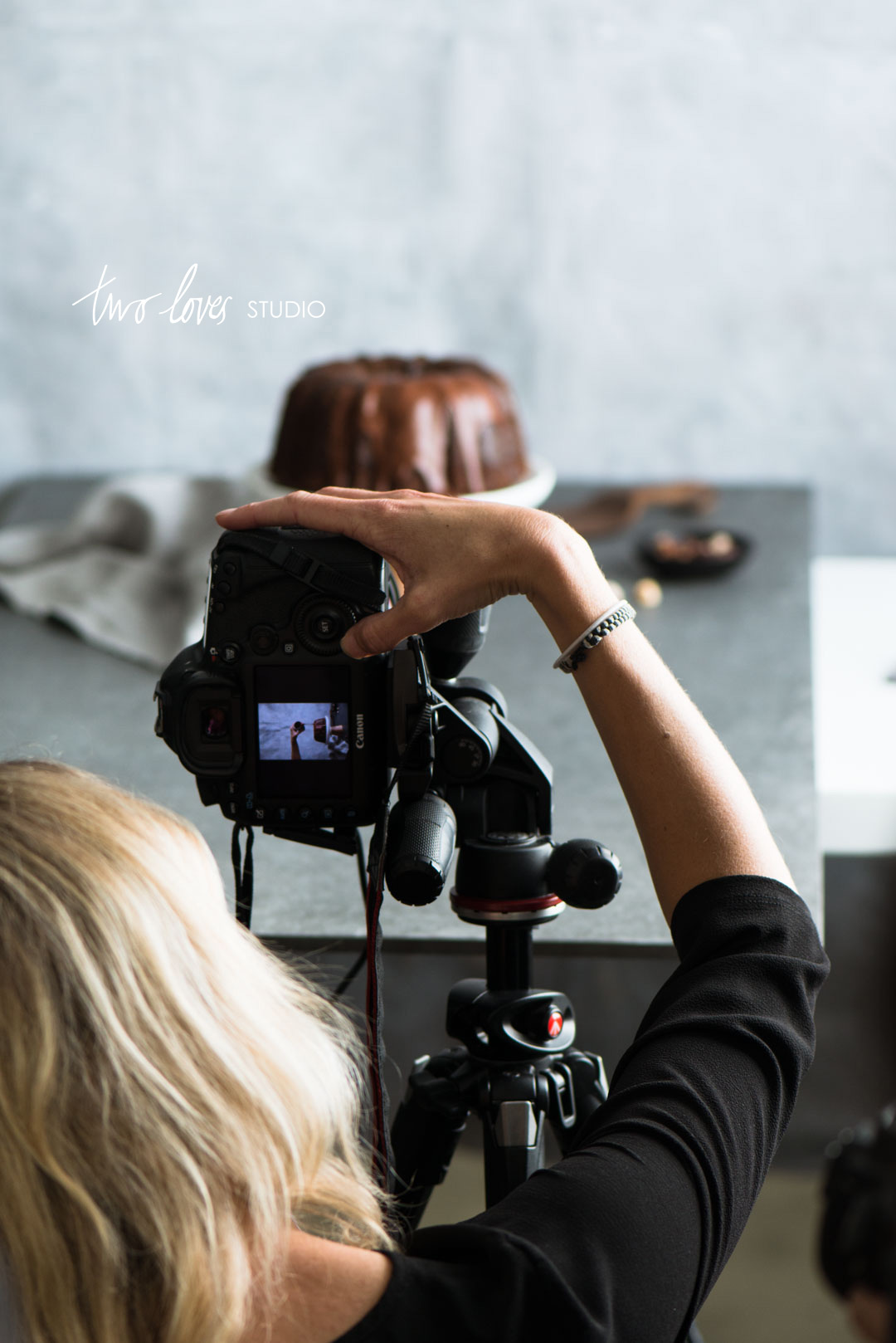
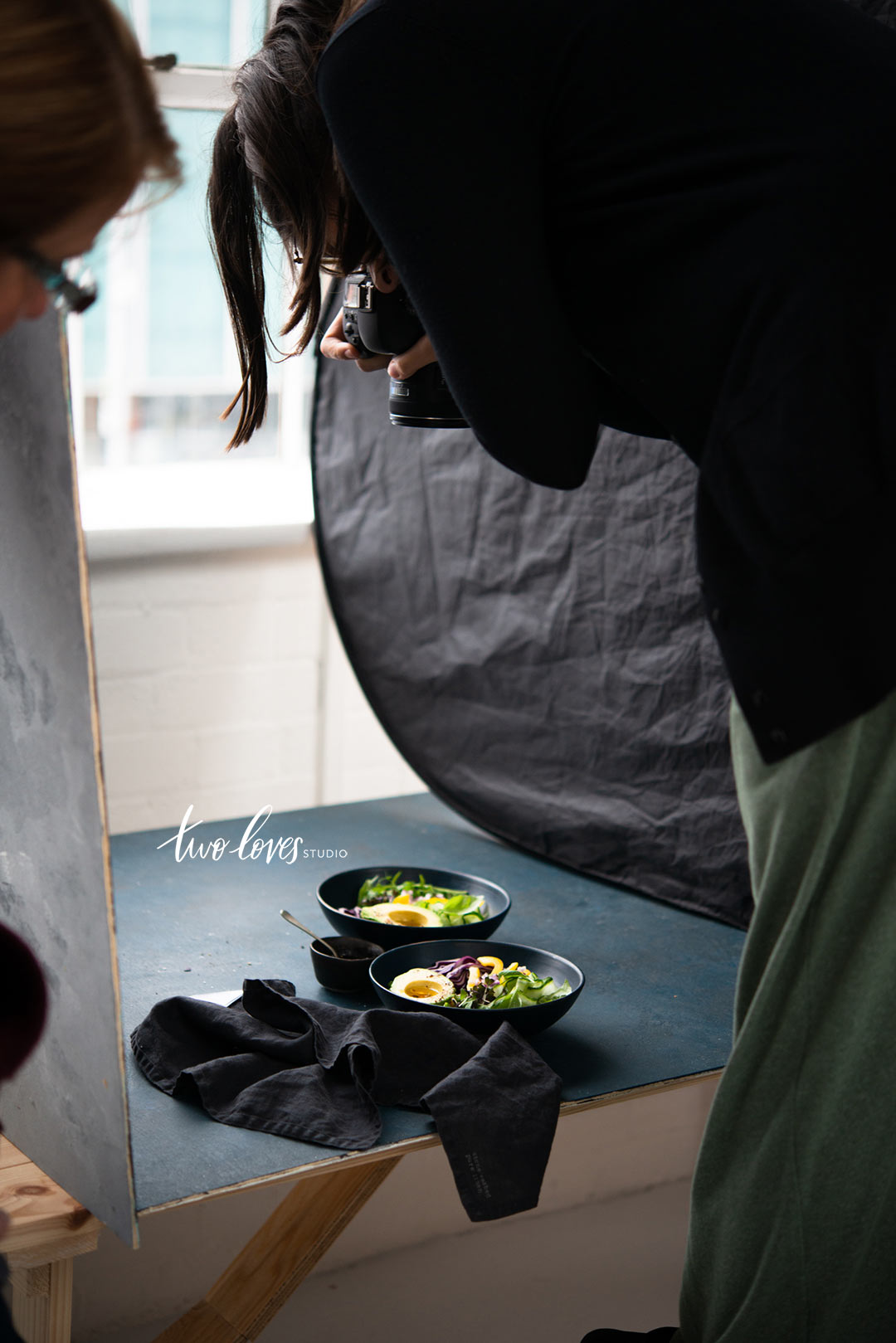


FOODHEAL
Hi Rachel, thank you so much for such a simple but more comprehensive post. I am looking for a camera, I’ve never owned one and really it’s a heck of time if I can say…. your post is very helpful. kiss
Rachel
So glad to hear that! Modules always change but these are things to make sure you look for! Best of luck.
Khasab Sea Tours
Great tips for photographers.
Rachel
Glad you think so! Thanks for stopping by.
Ayyappa
This blog has very informative content. I have known some useful tips from this blog. Thank you for sharing the knowledgeable information with us.continue publishing this kind of helpful blogs.If you are in search of rental cameras visit our official website.
http://www.cameraonrental.com/
advogados niterói
very good
Jasmine
Rachel, such great content. Thank you! I’ve only been doing food photography for a very short period of time and only on my phone ?. So of course I’m looking for good advice. I believe this will help me a lot!
Rachel Korinek
Hi Jasmine! I am so glad you found it useful. A new camera is such an exciting time. Best of luck x
Hanna Long
Great content…. for beginner still very confusing and I still definitely not idea what beginner camera would be good….
Rachel Korinek
Hi Hanna, I know choosing a new camera can be daunting! THe good news is that any entry-level Sony, Nikon or Canon camera will definitely get you what you need. Then it’s more about your lens choice. As I am not a gear review blog, I don’t keep up with the latest tech. If you have a few cameras in mind, let me know and I can tell you what I think 🙂 Have a lovely day.